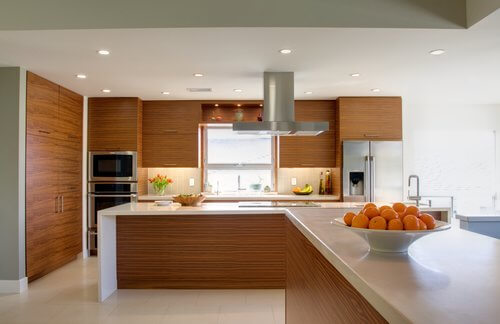Achieving a Healthy Lifestyle through Design
Achieving a Healthy Lifestyle through Design
by Laura McMahon
January 18, 2023
by Laura McMahon
January 18, 2023
How a kitchen is designed can play an influential role in eating healthy. A clear and decluttered island or counter allows plenty of room for meal prep. Being able to meal prep encourages home cooking which is typically more nutritious than grabbing take-out. Install task lights over the counter and a light fixture above the island to ensure a well-lit work area. Make it easy to make your morning smoothie by placing frequently used items such as blenders and food processors in an appliance “garage” on the counter instead of in the back of a hard-to-reach cabinet. Add an herb plant to your kitchen to easily add flavor your food instead of adding additional salt.
Designing an in-home gym is the obvious choice to encourage exercise, if you have the space. If you are using a flex room as a gym, make sure to incorporate adequate storage for equipment or accessories. Outdoor spaces, including back- and side-yards also can provide the space needed to do your burpees, squats, and lifts. Recovery is equally important to allow muscle rejuvenation and prevent injury. This is where spa-like bathrooms, steam rooms, spas and saunas are helpful.
Creating a tranquil environment for bedtime is crucial to ensuring you get a full and restful sleep; affecting everything from mood and memory to weight loss and stress. Consider bedroom placement in relationship to the family room or kitchen (to reduce noise) as well as the room’s position in terms of the sun’s pattern (with a window facing sunrise). Smart technology can also support a consistent routine – use shades on a timer to help keep a regular schedule, darkening the room at night and allowing natural sunlight to wake you up in the morning. For window coverings, install black out shades. Insulate interior walls to reduce sound transfer between rooms.
Ergonomic furniture, specifically seating, can improve posture. You can find built-in lumbar support and adjustable headrests with some reclining sofa sections to optimize comfort. For those with at-home offices, consider ergonomic office chairs, keyboards, footrests, and adjustable standup desks.

